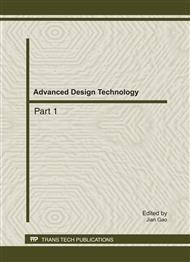p.542
p.548
p.553
p.559
p.563
p.568
p.574
p.579
p.584
Numerical Simulation and Optimal Design Investigation on Air Duct of Floor Standing Air-Conditioner
Abstract:
According to the structural characteristics of floor standing air-conditioner,three dimensional numerical model of air duct system for a certain floor standing air-conditioner is developed to simulate aerodynamic characteristic of the air duct. Flow characteristics and deficiency of air duct for original floor standing air-conditioner are analyzed, and the optimal schemes of air duct are raised and numerical simulation has been carried on to obtain aerodynamic characteristic of the new air duct. The numerical results show that the volume flow rate of air-conditioner with new air duct is increased by 6.1%. The experimental results of air-conditioner with new air duct show the volume flow rate of new air duct is promoted by 5.6% at the same approximate noise level. The numerical results agree well with the previous experiment.
Info:
Periodical:
Pages:
563-567
Citation:
Online since:
August 2011
Authors:
Price:
Сopyright:
© 2011 Trans Tech Publications Ltd. All Rights Reserved
Share:
Citation:


